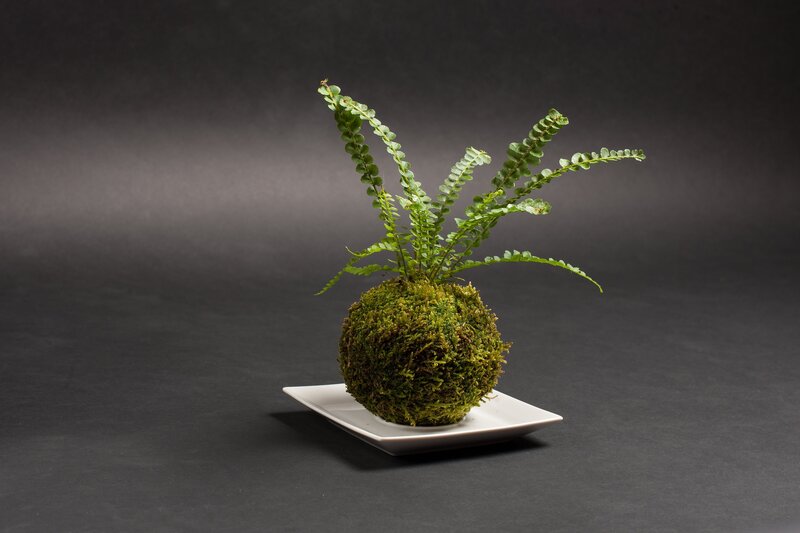Winter Plant Protection: A Gardener's Essential Guide
Posted on 26/05/2025
Winter Plant Protection: A Gardener's Essential Guide
As temperatures drop and frost approaches, winter plant protection becomes a critical concern for every gardener. Understanding how to shield your garden from harsh winter conditions not only ensures survival but also prepares your plants for a vibrant spring. This comprehensive guide explores winter plant care techniques, from basic preparation to advanced strategies, helping your garden thrive even in the coldest months.
Why is Winter Protection for Plants Important?
Cold, wind, snow, and frost can severely damage or kill both tender and hardy plants. Winter plant protection is essential because:
- Prevents frostbite: Root systems, stems, and buds are vulnerable to freezing."
- Reduces water loss: Wind and chill increase evaporation, drying out plants.
- Guards against pests and diseases: Some pests and fungi thrive in wet, cold, or weakened plants.
- Strengthens plant health: Protected plants experience less stress, resulting in brighter blooms and stronger growth come spring.
- Preserves investment: Perennials, shrubs, and "tender" plants often represent years of hard work and expense.

Preparing Your Garden for Winter
Assessing Your Garden's Needs
Every garden is unique. Before jumping into winter plant protection efforts, assess your garden's:
- Hardiness zone: Know your local climate and average winter lows.
- Plant types: Identify which plants are tender, borderline, or fully hardy for your area.
- Soil drainage: Wet soil can freeze, damaging roots.
- Exposure: Plants exposed to wind, open areas, or low-lying frost pockets need extra care.
General Preparation Tips
- Stop fertilizing in late summer: Avoid late-season growth that can be vulnerable to frost.
- Prune carefully: Remove dead or diseased material but avoid heavy pruning that exposes tender tissue.
- Clean up debris: Old leaves and plant matter harbor disease and pests.
- Weed thoroughly: Weeds rob roots of much-needed winter nutrients and moisture.
Top Methods for Protecting Plants in Winter
1. Mulching: Insulate & Nourish
Mulch acts as a protective blanket over plant roots, moderating soil temperature and moisture. It's one of the simplest and most effective winter plant protection techniques.
- Best materials: Use bark chips, straw, shredded leaves, or compost. Avoid solid plastic, as it prevents airflow.
- Depth: Apply 2-4 inches around the base of perennials, trees, and shrubs.
- Steps: Wait until after the ground has frozen to apply a thick mulch layer. Remove or thin in early spring to avoid mold and rot.
2. Covering Plants: Frost Blankets & Cloches
Covering plants provides crucial frost protection for sensitive varieties. Effective covers include:
- Horticultural fleece or garden fabric: Lightweight, breathable, and reusable for shrubs and beds.
- Burlap: Protects shrubs, evergreens, and roses from wind and sunscald.
- Cloches and cold frames: Glass domes or DIY plastic ups protect delicate seedlings and overwintered vegetables.
- Old sheets or blankets: Emergency protection for unexpected cold snaps--remove during the day.
Tip: Ensure covers don't touch leaves directly, and secure with weights or pegs to prevent wind displacement.
3. Smart Watering: Hydrate Wisely
Properly watered soil holds heat better than dry soil, giving extra root protection. Follow these tips:
- Water thoroughly before the ground freezes, especially evergreens and newly planted trees.
- Avoid overhead watering in freezing temperatures.
- Monitor soil moisture during mild spells and water if dry.
4. Wind Protection & Shelter
Harsh winter winds dehydrate and damage plant tissue. To shield plants:
- Install windbreaks: Use fences, burlap screens, or dense hedges.
- Group pots and containers: Cluster them together near a sheltered wall.
- Move containers indoors: Whenever possible, overwinter tender plants in a cool, frost-free spot.
5. Protecting Evergreens from Sunscald
Sunscald happens when warm winter sun thaws plant tissue, followed by a rapid refreeze. Protect:
- Wrap trunks of young or thin-barked trees with tree wraps or burlap.
- Shield from harsh afternoon sun using barriers on the south or southwest side.
Specialized Winter Protection for Different Plant Types
Protecting Roses in Winter
- Hybrid teas and grandifloras: Mound soil 12 inches around the base, cover with mulch, and wrap with burlap if exposed.
- Shrub and hardy roses: Generally, just a mulch layer will suffice.
Saving Perennials
- Cut back: After the first frost, cut most perennials to 2-3 inches above the crown to reduce rot and pests.
- Mulch: Add a thick protective layer after the ground is cold.
- Mark locations: Use stakes so you don't accidentally dig up dormant crowns in spring.
Winter Protection for Container Plants
- Group together and insulate: Place containers close and wrap in bubble wrap or burlap.
- Elevate: Ensure pots have drainage and are off cold concrete or metal surfaces.
- Move indoors: Tender favorites can often overwinter in a garage or porch with some light and minimal water.
Winterizing Trees and Shrubs
- Mulch a wide ring around the base.
- Water deeply before freeze-up.
- Guard against animals: Use trunk wraps or hardware cloth for rodents and deer protection.
- Prune damaged limbs: Remove only broken branches after winter storms.
Winter Gardening Hazards and Solutions
Dealing with Snow and Ice
- Gently shake snow off branches to prevent breakage.
- Never use salt products near gardens; use sand or cat litter for slips.
- Prune split branches immediately to prevent disease entry.
Identifying and Preventing Winter Pests
- Rodents: Voles and mice chew bark--use collars on tree trunks.
- Deer: Install fencing or use repellents in areas prone to browsing.
- Insects: Dormant oil sprays control overwintering eggs on fruit trees.
Common Mistakes to Avoid with Winter Plant Protection
- Over-mulching: Suppresses oxygen and causes rot if applied too deep or too early.
- Poor drainage: Too much water leads to root rot--ensure winter wet areas are well-drained.
- Forgetting to remove covers in spring: Can stunt new growth and cause fungal problems.
- Using non-breathable material: Plastic wraps suffocate plants--always prefer breathable options.
Winter Plant Protection for Specific Climates
Cold Temperate & Snowy Regions
- Deep mulch and cloche covers are key.
- Avoid foot traffic on frozen lawns and beds to preserve soil structure.
- Prune only after the risk of severe frost in late winter or early spring.
Mild Winters & Rainy Winters
- Drainage is essential--raise beds or add organic matter.
- Shield against excessive rain: Mulch prevents soil erosion and compaction.
- Monitor for slugs and fungal issues: Check under debris and apply natural remedies.
Preparing for Unexpected Cold Snaps
Weather can be unpredictable, and sudden freezes can catch even seasoned gardeners off-guard. Always keep emergency supplies--such as horticultural fleece, burlap, and mulch--on hand. Monitor weather forecasts regularly, and react quickly to protect at-risk plants.
Checklist: Your Winter Plant Protection Routine
- Evaluate plant hardiness zones and exposure.
- Prune out dead or diseased growth.
- Deeply water well before first hard freeze.
- Apply mulch and leaf litter around root zones.
- Install barriers and covers as needed.
- Move potted plants to sheltered locations.
- Monitor for animal and pest activity.
- Check covers and mulch after storms.
- Remove protective measures at thaw.

Frequently Asked Questions on Winter Garden Protection
Q: When should I start preparing my garden for winter?
Begin preparations in late autumn, before the first hard freeze, but wait to apply heavy mulch or covers until after the ground's surface has cooled to prevent rodents from nesting.
Q: What's the best mulch for winter plant care?
Organic mulches like shredded leaves, wood chips, bark, and straw provide the best insulation while enriching the soil.
Q: How should I protect plants from heavy snow?
Gently brush heavy snow off branches, but avoid breaking stems. It's best to tie upright evergreen shrubs and small conifers loosely before storms to prevent splaying.
Q: Are there certain plants that don't need winter protection?
Native, established, and hardy plants for your zone often require little to no extra care, but all new plantings benefit from extra protection their first winter.
Conclusion: Embrace Winter with Confident Garden Care
With the right winter plant protection strategies, your garden can endure--and even thrive--through the cold, dark months. From mulching and covering plants to providing wind breaks and monitoring for pests, these expert techniques ensure vibrant, robust growth when spring returns. Take the time to plan and implement these practical steps, and you'll reap the joyful rewards of a healthy, resilient landscape come warmer days.
Keep this essential guide to winter plant protection handy as the cold approaches, and transform winter from a time of stress to a season of preparation and hope for every gardener. Happy gardening!



